Contributed by Jody Muelaner
Cable carriers are essentially hollow chains that enclose electrical cables, as well as hydraulic or pneumatic hoses. They guide and protect the enclosed cables during motion, preventing wear and damage. An important function of cable carriers is to constrain bending to a single plane and to limit the minimum bend radius. This both prevents entanglement and avoids high stresses due to overly tight bends. Cable carriers also prevent cables from getting caught in moving parts of a machine.
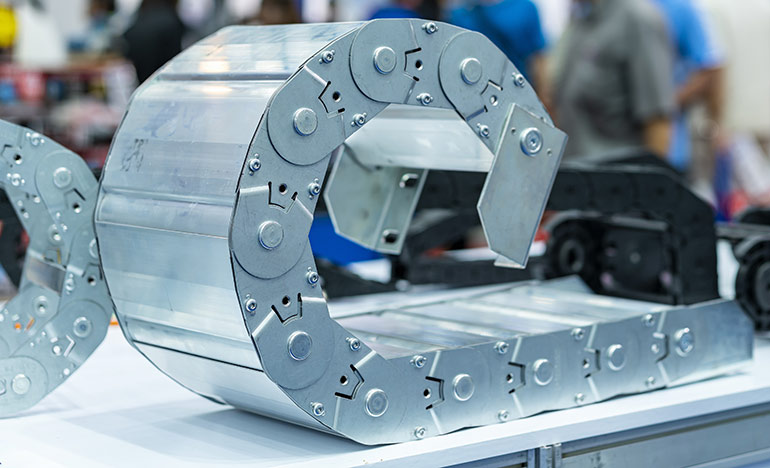 Steel and other metal alloy cable carriers are required when the cable carrier may be subjected to heavy mechanical loads, physical damage, or high temperatures. They are often used for the largest cables and hoses, operating in harsh environments.
Steel and other metal alloy cable carriers are required when the cable carrier may be subjected to heavy mechanical loads, physical damage, or high temperatures. They are often used for the largest cables and hoses, operating in harsh environments.
Important questions to ask when selecting a cable carrier include:
- External dimensions: How much movement is required and how much space is available to accommodate the length of the track, as well as the height of the bend?
- What type of motion must the cable carrier allow? Most cable guides are designed to accommodate linear motion along a single axis but multi-axis linear motion or rotation can also be accommodated.
- Internal dimensions and minimum bend radius: How much space is required to accommodate the cables and/or hoses? What are their minimum bend radii?
- Ingress protection: Will there be debris present in the working area, such as wood chips, swarf, or dirt? Do the cables or hoses need to be protected from this debris? What about water or chemicals? Open cable carriers make it easier to access cables but closed cable carriers are required for good ingress protection.
- Corrosion resistance: Will the machine operate in a humid or corrosive environment? Are there any other considerations of chemical resistance? This is particularly important for metal cable carriers were corrosion resistant alloys or coatings may be required.
- Is physical damage a consideration? If there is a risk of significant impacts or wear then an armored cable carrier may be required to resist this.
- What is the required operating temperature range?
- What vibrations will the machine be subjected to? Some designs of cable carrier will damp vibrations better than others.
- Will the machine be operating in a clean room environment? This would mean that a low-wear cable carrier is required which does not produce particulate matter as bearing surfaces wear.
The first cable carriers were constructed in metal. Metal cable carriers have now been replaced by plastic for most applications. Plastic is less costly, self-lubricating, corrosion resistant, and provides adequate protection for most applications. Plastic can also form a flexible continuous boot, for a completely sealed closed cable carrier. Metal cable carriers remain able to carry the highest loads and operate in the highest temperatures. They therefore still have a role for large machinery and harsh environments.

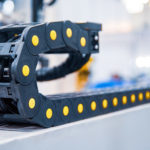
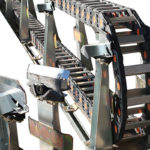
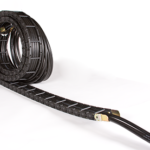
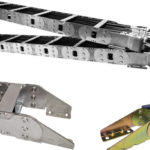
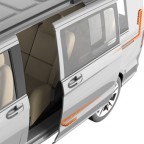

Leave a Reply
You must be logged in to post a comment.